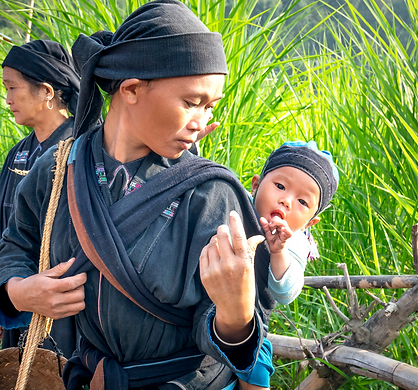
THE
CHALLENGE
Most environmental policymakers in Europe are men, and none of our decision-makers represent the voices of the communities most impacted by the climate crisis. This is not accidental—it is the result of white supremacist and patriarchal power structures that shape whose knowledge is valued and whose survival is prioritised.
Without centering the expertise and lived experiences of racialised women, girls, and gender-diverse people from the Global Majority, we are not just failing in climate justice—we are reinforcing the same systems that created this crisis.
True Environmental justice is anti-racist and feminist. We cannot afford to leave those on the front lines out of the conversation. It’s time to shift the balance of power and ensure that those who bear the greatest burden of climate collapse are the ones shaping the solutions.
CLIMATE CHANGE AFFECTS US ALL, BUT IT DOESN'T AFFECT US ALL EQUALLY.
The climate crisis has become an urgent and existential threat, impacting every corner of our planet. However, among those who suffer most profoundly are women from the global majority.
Health & Wellbeing
.png)
Women of the global majority are at the forefront of climate-related health risks. According to the World Health Organization, women constitute 80% of those displaced by climate change. Disrupted ecosystems intensify the prevalence of diseases, resulting in a staggering 90% of deaths during natural disasters befalling
women. Furthermore, inadequate access to clean water and sanitation exacerbates health issues, with 1 in 3 women lacking these essentials, leading to increased vulnerability to diseases like malaria and diarrhea infections.
When extreme weather disasters strike, women and children are 14 times more likely to die than men, mostly due to limited access to information, limited mobility, decision-making, and resources.
-
Women were 50% more likely to die during Super Typhoon Haiyan, the Philippines's worst ever storm, in 2013. (Erving Ballera et al. 2015)
-
90% of the 140,000 Bangladeshis who were killed in the 1991 Cyclone were women.
-
In India, Sri Lanka and Indonesia, Oxfam found more men survived the 2004 Tsunami than women.
.png)
Food Insecurity
The climate crisis deeply impacts global food systems, amplifying the struggles faced by women as primary caregivers and food providers. Women, who constitute 43% of the agricultural labor force in developing countries, are hit hardest by reduced crop yields, land degradation, and changing rainfall patterns. UN Women reports that women in sub-Saharan Africa spend approximately 40 billion hours annually collecting water and fuelwood due to increasing water scarcity, diminishing their time for education, income generation, and community participation.
.png)
Gender -Based Violence

The climate crisis compounds gender-based violence, exacerbating pre-existing inequalities and reinforcing harmful gender norms. During displacement and in resource-scarce environments, women face heightened risks of physical, sexual, and emotional violence. The United Nations Population Fund estimates that after natural disasters, the incidence of gender-based violence can increase by up to 70%.
Furthermore, the loss of traditional livelihoods due to climate change often forces women into informal labor sectors where exploitation and human trafficking flourish.
This pattern is observed worldwide: a 2018 study in Madrid found a 40% increase in the risk of intimate partner femicide following heatwaves. After the 2011 Canterbury earthquake in New Zealand, police reports recorded a 53% surge in domestic violence. In the United States, incidents of violence against women increased by a staggering 98% following Hurricane Katrina. Similarly, a study across three South Asian countries found that a 1°C rise in average temperature correlated with a 4.5% increase in violence against women and families.
Economic Disadvantages
The climate crisis exacerbates pre-existing economic inequalities, disproportionately affecting women from marginalized communities. In the face of extreme weather events and natural disasters, women lose their livelihoods at a higher rate than men. The International Labour Organization highlights that women make up the majority of the world's informal economy, making them more vulnerable to income shocks. Moreover, women often face limited access to financial resources, land rights, and decision-making power, hindering their capacity to adapt to climate change and secure sustainable livelihoods.
.png)
But that's only one side of the story...
Across the world, women on the front lines of the climate crisis and environmental degradation are leading direct action to protect their lands, communities, and futures. They are not passive victims of environmental destruction—they are active defenders of the earth.
Studies show that women are more likely than men to engage in climate action, advocate for environmental policies, and adopt sustainable practices.
Whilst we must recognise their agency, it is crucial not to romanticise or sensationalise their resistance—this is not a choice, but a necessity. The alternative is displacement, heightened gender-based violence, food insecurity, and loss of sovereignty over their territories and resources.
Despite their leadership, and despite being disproportionately impacted by the climate crisis and environmental issues, their voices remain unheard in global environmental governance.

.png)





